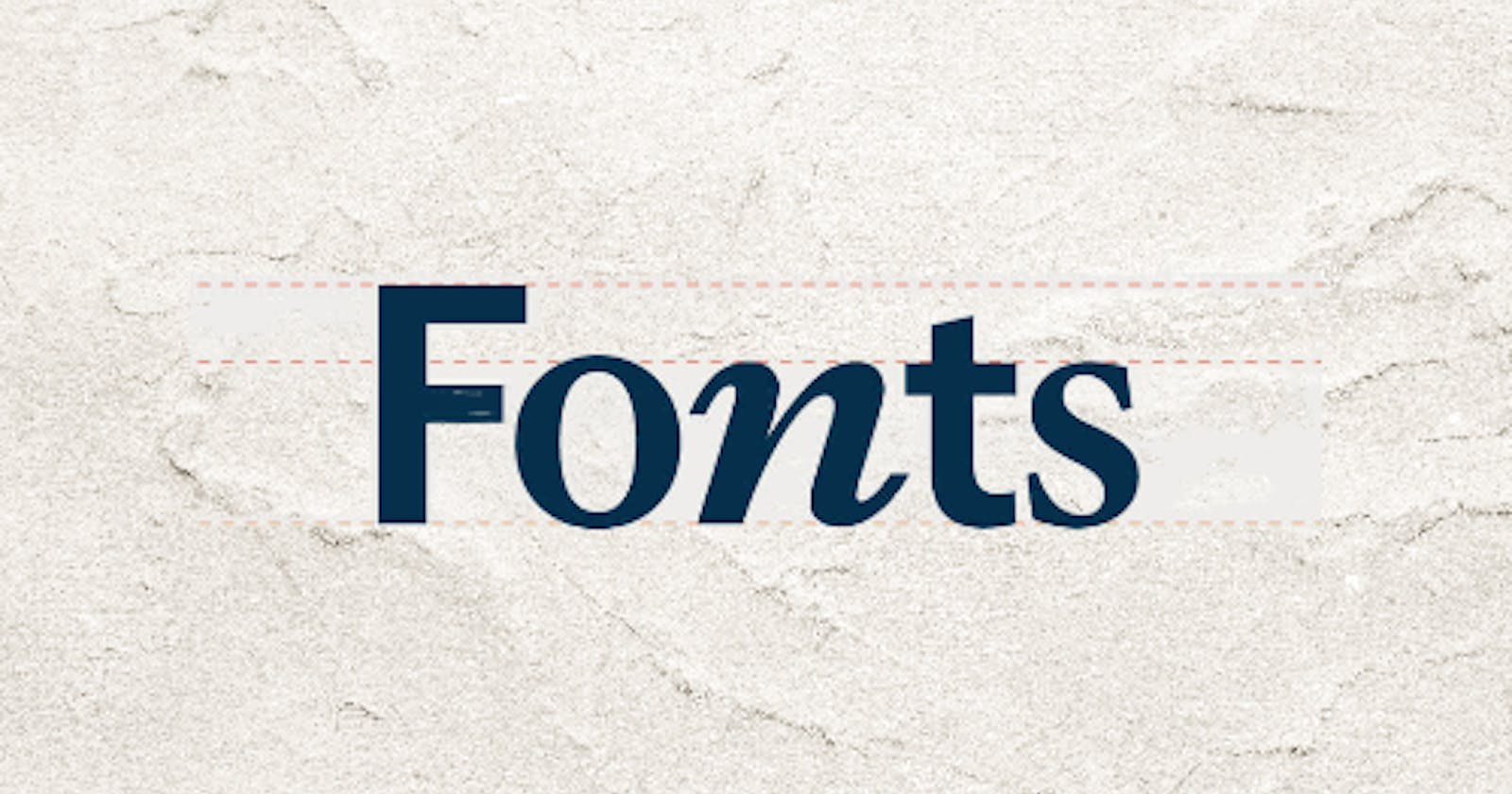Impact of Fonts on web browsers
Understanding font loading and relevant Cumulative Layout Shifts
Introduction
As front-end developers, we often focus on the visual design and functionality of websites, but have you ever considered the impact of fonts on Cumulative Layout Shifts (CLS)? I can relate to this, as I, too, overlooked the significance of font usage until I read an insightful post about fonts affecting CLS. It was a wake-up call that made me realize the crucial role fonts play in web development. In this blog, we will explore how fonts are loaded in browsers, the default font families, and how font loading affects CLS. By gaining insights into these aspects, we can optimize font usage and minimize layout shifts, ultimately enhancing the user experience on our websites.
Fonts in Web Browsers
Font Families and Default Fonts: Different browsers and operating systems have their own default font families, which are used when no specific font is specified. Let's take a look at some common default font families:
Arial, Helvetica, sans-serif (Windows and macOS)
Times New Roman, Times, serif (Windows and macOS)
Courier New, Courier, monospace (Windows and macOS)
Verdana, Geneva, sans-serif (Windows)
Lucida Sans Unicode, Lucida Grande, sans-serif (macOS)
Palatino Linotype, Book Antiqua, serif (macOS)
Georgia, serif (macOS)
( Note: Please note that the default font families may vary slightly depending on the specific versions and configurations of the operating systems.)
These default fonts ensure that if a specific font is not available on a user's device, the browser can fall back to a similar font within the designated font family.
Font Formats and Loading Mechanisms: Fonts come in various formats, such as TrueType (TTF), OpenType (OTF), Web Open Font Format (WOFF), and WOFF2. Each format has its advantages and compatibility considerations. When it comes to loading fonts in browsers, there are two main mechanisms: blocking and non-blocking.
Blocking mechanisms refer to the traditional way of loading fonts, where the browser waits for the font to load before rendering the text. This can lead to delays in page loading, especially if the font file is large or the server response time is slow. On the other hand, non-blocking mechanisms, also known as asynchronous loading, allow the browser to continue rendering the page while the font is being loaded. This approach can significantly improve page loading speed, as it avoids rendering delays caused by font loading.
Impact on Cumulative Layout Shifts (CLS)
What is Cumulative Layout Shift (CLS)? Cumulative Layout Shift (CLS) is a metric that measures unexpected layout shifts during the page load. When elements on a page shift unexpectedly, it can be frustrating for users, especially if they are in the middle of interacting with the content. CLS quantifies these layout shifts, helping developers identify and address issues that may impact the user experience.
How Fonts Affect CLS
Fonts can have a significant impact on CLS. One common issue is delayed font loading, where the text content is initially displayed with a fallback font and then shifts when the desired font is loaded. This shift can cause layout disruptions and impact the overall user experience. Additionally, discrepancies in font sizes can lead to unexpected shifts in the layout. Flash of Unstyled Text (FOUT) is another font-related issue where the text content briefly appears unstyled until the desired font is loaded.
Optimizing Font Loading and CLS
Techniques to Minimize CLS:
To minimize CLS related to font loading, developers can employ several optimization techniques. One approach is to preload fonts, which involves fetching and storing the font files in advance, reducing the delay in font loading. Here's an example of how to preload a font using the <link> tag in HTML:
<link rel="preload" href="path/to/font.woff2" as="font" type="font/woff2" crossorigin="anonymous">
In the above code snippet, we use the rel="preload" attribute to indicate that the resource should be preloaded. The href attribute specifies the path to the font file, while the as="font" attribute indicates that it is a font resource. The type attribute specifies the font file format, such as font/woff2 for WOFF2. Finally, the crossorigin="anonymous" attribute is added to ensure proper CORS handling.
Web Font Performance Tools
Various tools and resources are available to analyze and optimize web font performance. These tools can provide insights into font loading times, help identify and fix CLS issues, and optimize font delivery. Some popular web font performance tools include:
Google Fonts Performance:
Provides performance metrics for Google Fonts, including loading time and potential CLS issues.
Offers suggestions on optimizing font delivery and implementation.
WebPageTest:
A comprehensive testing tool that allows you to analyze various aspects of web performance, including font loading and CLS.
Provides detailed performance reports and recommendations for improvement.
Lighthouse:
A built-in tool in Google Chrome's Developer Tools that offers insights into web page performance, including font loading optimization and CLS metrics.
Helps identify and fix performance-related issues, including font-related CLS.
Font loading and its impact on Cumulative Layout Shifts (CLS) are crucial aspects of web development. By understanding these factors and implementing optimization techniques, we can create visually appealing websites with a seamless user experience. I hope this blog has provided valuable insights to enhance your font usage and minimize layout shifts on your web pages.
